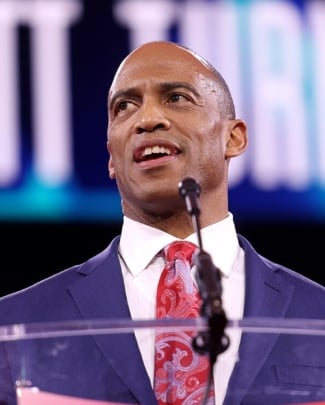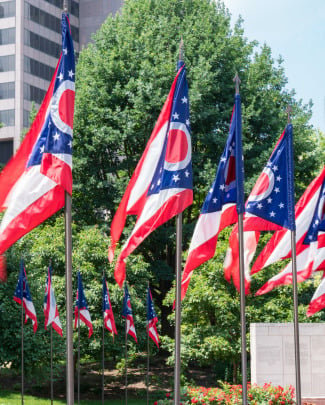States and local authorities simply have no idea what happened to these ballots since they were mailed – and the figure of 28 million missing ballots is likely even higher because some areas in the country, notably Chicago, did not respond to the federal agency’s survey questions. This figure does not include ballots that were spoiled, undeliverable, or came back for any reason.
Although there is no evidence that the millions of missing ballots were used fraudulently, the Public Interest Legal Foundation, which compiled the public data provided from the Election Assistance Commission, says that the sheer volume of them raises serious doubts about election security.
This is a critical issue! If you missed the May First Friday Prayer Call on election integrity and the potential for fraud, you can watch and pray now, and DOWNLOAD the prayer guide with important prayer points and action steps from the call.
These questions are particularly relevant as the COVID-19 pandemic is forcing states across the country to rapidly expand vote-by-mail operations in an election year. Democratic Sens. Amy Klobuchar and Ron Wyden have proposed the Natural Disaster and Emergency Ballot Act of 2020, a bill that would allow every eligible voter the opportunity to vote by mail, regardless of state laws governing mail-in ballots.
A significant increase in mail-in voting this fall could greatly incentivize “ballot harvesting,” where third parties collect mail-in ballots on behalf of voters and deliver them to election officials. There’s long been a consensus that such a practice incentivizes fraud, and ballot harvesting is illegal in most of the country. Public debate over the issue has intensified in recent years after a GOP operative in North Carolina was indicted for crimes related to ballot harvesting in 2018.
That same election cycle California legalized ballot harvesting, and observers say the practice played a key role in ousting several Republican congressmen in Orange County in 2018, a longstanding GOP stronghold in a state that has become very liberal in recent decades.
The fact that millions of unused mail-in ballots are floating around in every election cycle “is not a secret type data here – it’s sitting there on the Internet, and you’re paying for the server cost,” notes Logan Churchwell, a spokesman for PILF. “So what do people that really focus on the election process do about that? They go into ballot harvesting. If there’s so many ballots out there in the wind unaccounted for by election officials, surely some manpower could be dedicated to go bring them in. And that’s another part of the system where you have weaknesses and risk.”
To illustrate the risk, Churchwell notes that in 2016 Hillary Clinton won the popular vote by garnering over 2.8 million more votes than Donald Trump. But nearly 6 million unaccounted mail-in ballots were never counted in 2016, more than twice her margin in the popular vote. The potential to affect elections by chasing down unused mail-in ballots and make sure they get counted – using methods that may or may not be legal – is great.
There’s little doubt that as the number of mail-in ballots increases, so does fraud. A 2012 report in The New York Times noted that voter fraud involving mail-in ballots “is vastly more prevalent than the in-person voting fraud that has attracted far more attention, election administrators say. In Florida, absentee-ballot scandals seem to arrive like clockwork around election time.” According to a Wall Street Journal report on voter exploitation in Hispanic communities in Texas, mail-in ballots have “spawned a mini-industry of consultants who get out the absentee vote, sometimes using questionable techniques.” Poor, elderly, and minority communities are most likely to be preyed upon by so-called ballot “brokers.” . . .
Regardless, U.S. Census data confirms that 11% of Americans move every year, and voters on the lower end of the economic scale are especially transient. Without implementing some extensive, and likely problematic, government surveillance program, there’s no way for election administrators to reliably get ballots to tens of millions of Americans every election cycle without a large percentage of ballots going to the wrong address. This problem is compounded by states that mail ballots automatically. (The author of this piece is from Oregon, where ballots with his name on them were sent to his parents’ address for years after he graduated from college and moved out of state — despite repeated contacts with the county clerk telling them he had moved.)
The inherent problems of mail-in voting are being widely ignored, however. Use of mail-in ballots more than doubled from 24.9 million in 2004 to 57.2 million in 2016, and around 40% of U.S. votes are now done by mail. Along with this dramatic increase there have been virtually no new safeguards, scrutiny, or additional research on the risks of vote by mail. If the current pandemic is going to force the issue during a presidential election, proponents of voting by mail may have to address obvious risks that come with proposing that more than 200 million ballots be mailed out this fall.
“I really think the only reason vote-by-mail problems are not getting more attention on a regular basis, is that it’s kind of an embarrassing problem and people just aren’t paying attention,” says Churchwell. “These numbers of missing ballots demonstrate large voter list maintenance failures and security gaps within the broader mail voting process.”
(Excerpt from Real Clear Politics. Article by Mark Hemingway.)






Comments
This only proves the ballots were missing.The men that were fired was why? I do not think you can assume Hillary won.lol what else will you come up with?
I believe as we pray God responds and moves on behalf of the prayer of His children.
Lord God I thank You for being in control of Your world. Thank You for the Power that you won for us at the Cross. Give us Your wisdom individually as to our part to in prayer in Your army. Thank You Heavenly Father for leading and answering our prayers.
Lord,help us to get involved in thwarting the evil scheme of fraudulent voting. Help us rise up to keep America free and witness to the lost…in Jesus Name
Heavenly Father,
We ask for integrity in our Elections. Father, One American Citizen, One Vote – and may the results be tabulated 100% correct.
Father, remove from all 50 States the insecure mail-in voting, ballot harvesting and clean up unsubstantiated voter roles. We also ask You God, in all 50 States that You would make Voter-ID the norm. We cry out to You God about this issue – may justice and righteousness return to America. In Jesus Name.
Lord let all crooked ways of those pushing for mail in voting be revealed and the way of integrity be put into place. May all people be made aware of this wicked scheme to try and steal this election. Help us to take a stand and refuse any pressure to vote by mail! In Jesus Name! Amen!
Christians commanded to vote: All scripture is good for teaching, and Ester teaches the people of God almighty to take dominion over and subdue the secular government, to spread the Kingdom of God Almighty and Protect the people of God.
Gen 1:28 And God blessed them: and God said unto them, Be fruitful, and multiply, and replenish the earth, and subdue it; and have dominion over the fish of the sea, and over the birds of the heavens, and over every living thing that moveth upon the earth. ASV
We are not going to accept this indicator of the enemies advance thru this nation But God… we are all standing on the facts. God says He’s the Author and Finisher of All works on the earth. Therefore, we Decree now that this destroying enemy of liberty and Justice is defeated in the name of Jesus. We decree now that angels surround each person as they vote. Angels surround each voting place, each library, each postal worker and all the means of counting and evaluating each and every vote.
We take our Stand this day and move forward as the Chosen of the Lord to correct all concealed activity that needs to be uncovered. That all fraudulent votes and actions by All who want to deny access to the polls be removed to Their detriment so that the enemies of our liberty be stalled in the mud and not allowed to bring any into the public arena.
May the Blessings and fortitude of the Almighty render All opposing forces null and void whether public or private. From family members or church administrators and congregations that discount the enemy and his evil designs. May the Power of the written Word have Authority to disperse All negativity for God’s Chosen vessels.
We pray in the Authority and anointing of the Holy One.
AMEN.
Father
We come together and agree in the name of Yeshua. You will expose this wicked evil scheme ,the enemies of You and Your agenda have put together. I thank you Lord it doesn’t matter how hard they try the forces of darkness will not succeed. The same way they rejoiced when they nailed Yeshua to the tree and a greater victory was in store. Father you have a plan for this nation and no man or plan will abort or thwart Your plan. We declare a fair election and that every legitimate vote to be counted. That those that arent will not be and that you will open Your peoples eyes that this is a battle for the soul of this nation and it is time to Stand up, by kneeling before the King of Kings and ask that His will be done on earth as it is in Heaven. That through our living God of Abraham, Isaac and Jacob we shall do valiantly. I pray Your people will wake up and get involved in the battle to see Our God do a mighty miracle in hearts across this nation. Hearts of stone are now becoming pliable in the hands of Yeshua. We will not be a nation of lawlessness, but a nation of righteousness that follows the law and Words of God in Yeshuas name Amen
Father, we pray for Your wisdom to enter into President Trump’s mind and the mind of our political leaders. We Declare that they have the mid of Christ. You have said, “If any man lack wisdom, let him ask of God who gives liberally.” We stand in the gap asking oin behalf of our Godly leadership. Your word says, “Righteousness exalteth a nation: but sin is a reproach to any people.”( Prov 14:34) We repent for the evil we have walked in as a nation and ask that the cleansing blood of Jesus would flood our nation and purge out all the evil in the hearts of men. Let righteousness rule once again. Let the evil e caught in their own schemes and rooted out of our land.
Thank you Father that you are able to do exceedingly, abundantly above what we can ask imagine! To You, Oh Lord, be the Glory and Honor! Amen !
Two weeks ago while in prayer the Lord opened the spirit realm up to me and showed me lLarge PALLETS sitting in empty warehouses across America they were FILLED WITH 2020 ELECTION BALLOTS FILLED OUT WITH BIDENS NAME WRITTEN ON THEM. THEY WERE ALREADY FILLED OUT READY TO GO AND WRAPPED IN CELLOPHANE…. AND THE LORD SAID THE DEMOCRATS ARE GOING TO STEAL THE ELECTION, PRAY FOR ME TO EXPOSE THIS !!!
PLEASE INTERCESSORS PRAY FOR THIS TO BE EXPOSED. PLZZZ PAS THIS ON TO OTHERS.
Father we have prayed to stop any and all fraud, we know the evil ones plot and plan but you oh God see everything and you sit in heaven and laugh! Thankyou father you will destroy every plot!
This will be a righteous election
Getting out the evil ones!
We will be led in truth and righteousness!
Nearly 1 Million Pennsylvanians Have Applied for a Mail-In Ballot for June 2 Primary Election.
The commonwealth of Pennsylvania has a VERY liberal democratic governor, and a lot of local gospel churches are praying for him and his administration.
This is the article posted on the CwOPA website: “https://www.governor.pa.gov/newsroom/nearly-1-million-pennsylvanians-have-applied-for-a-mail-in-ballot-for-june-2-primary-election/”.
We need to pray that other states are not following the democratic plot to influence the 2020 election.
This past Fridays webcast prompted me to pray even more about the upcoming election.
May God continue to Bless You and Your Ministries.